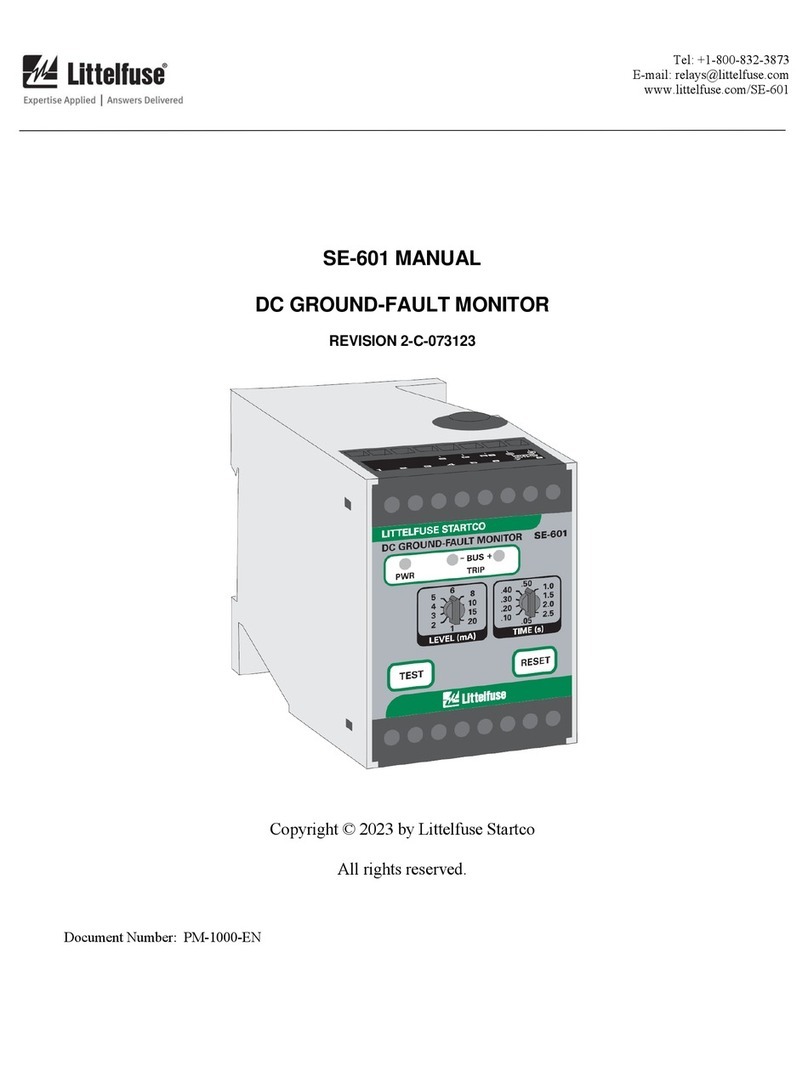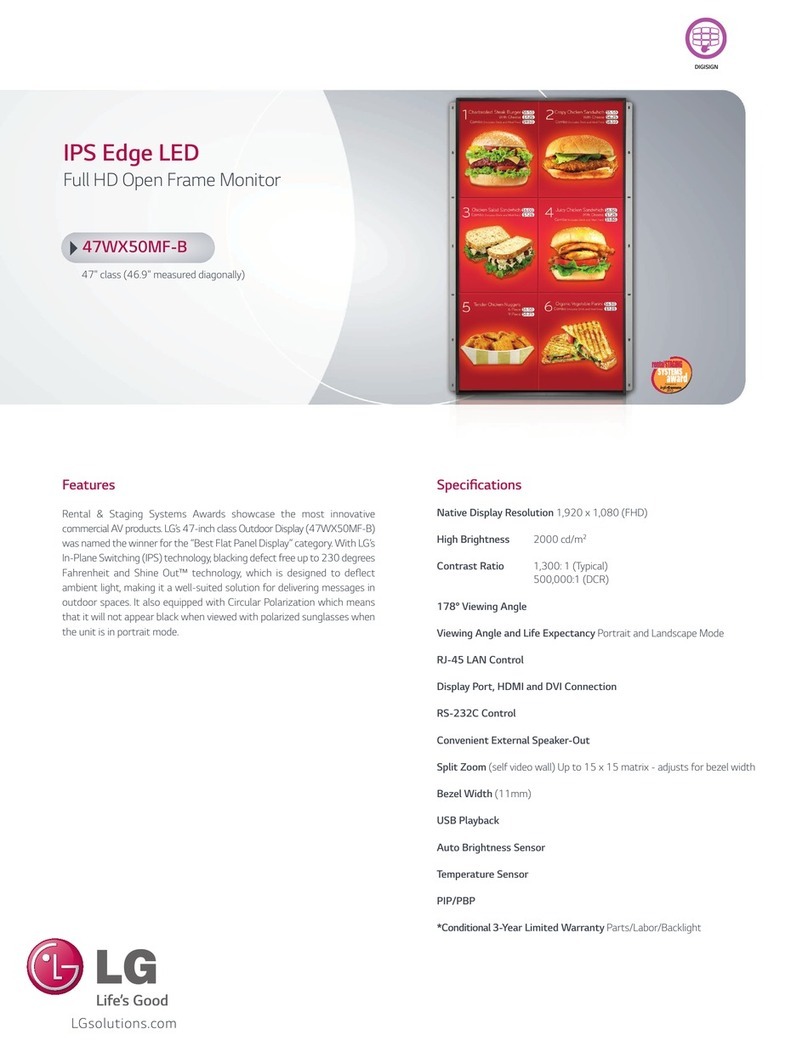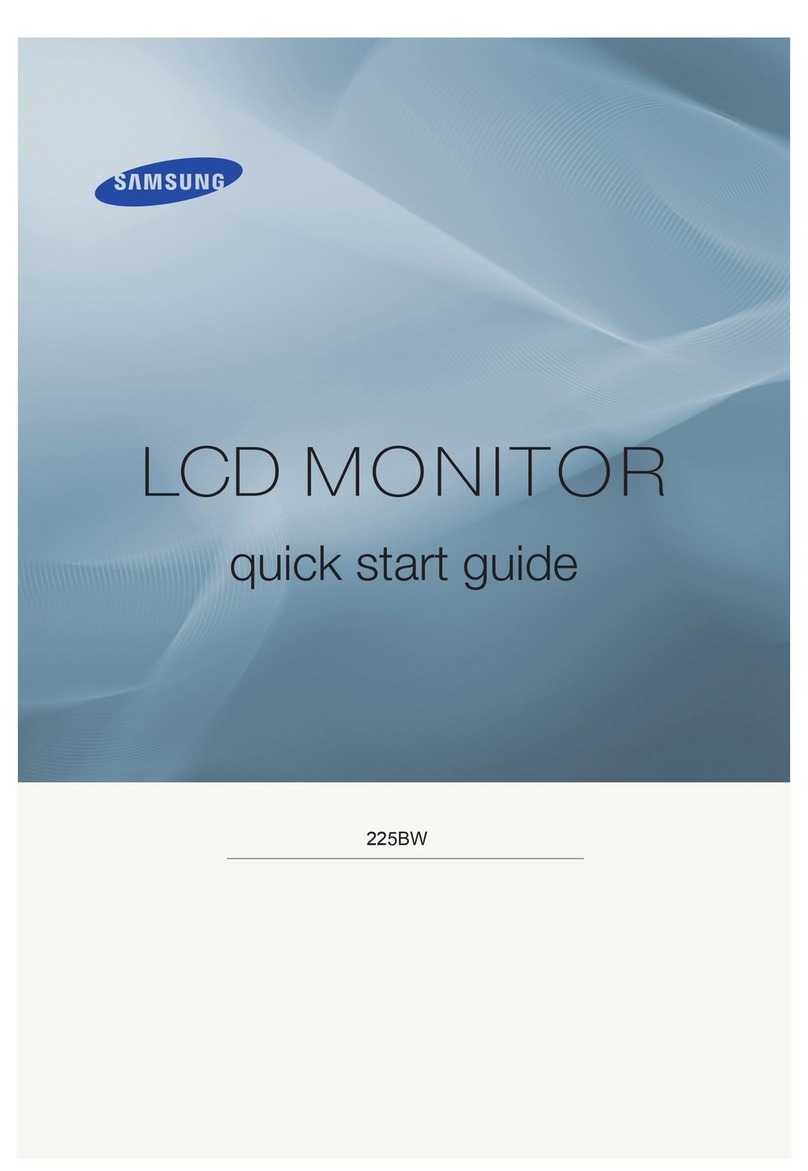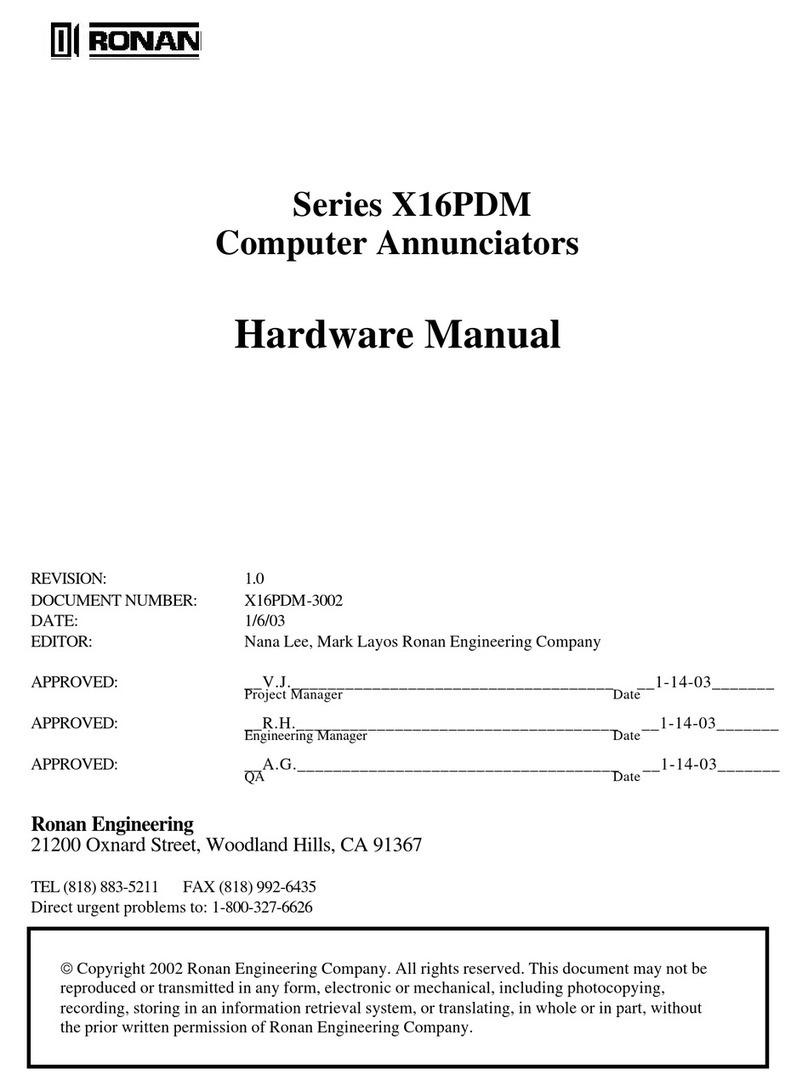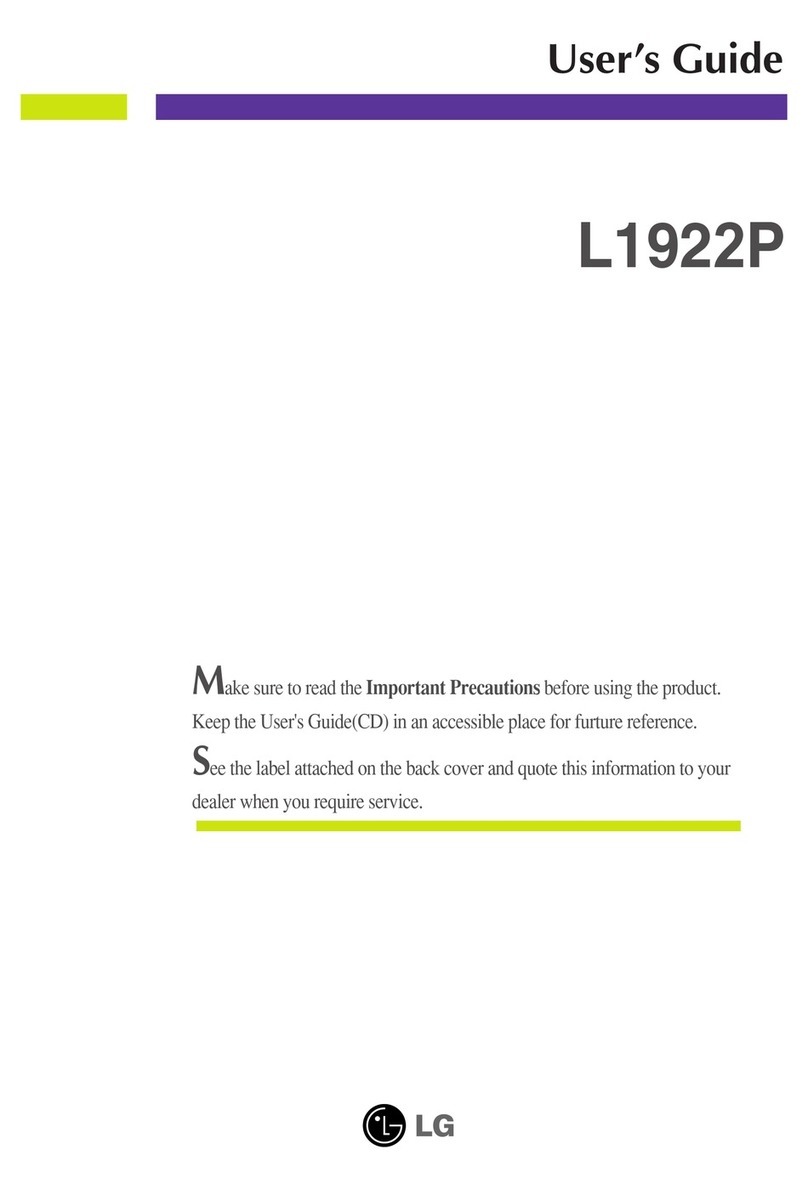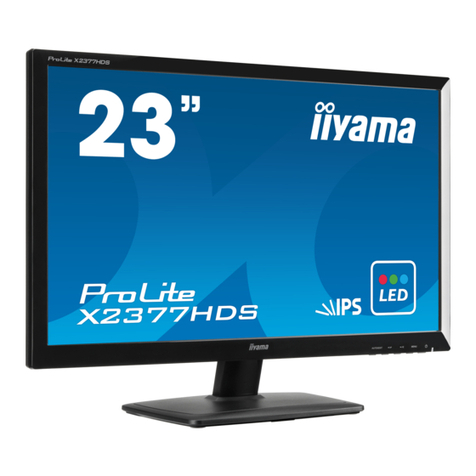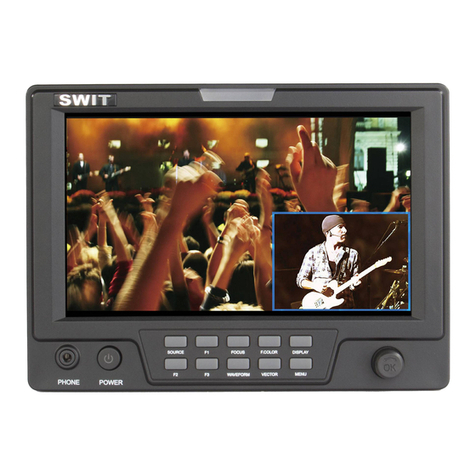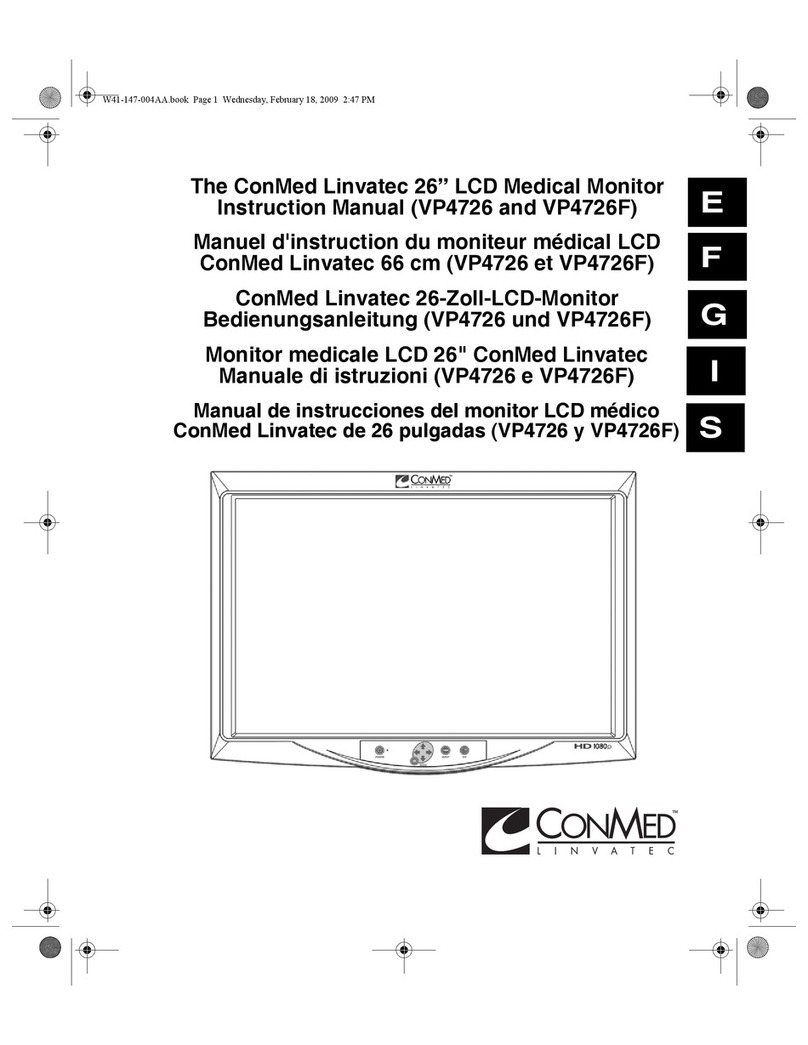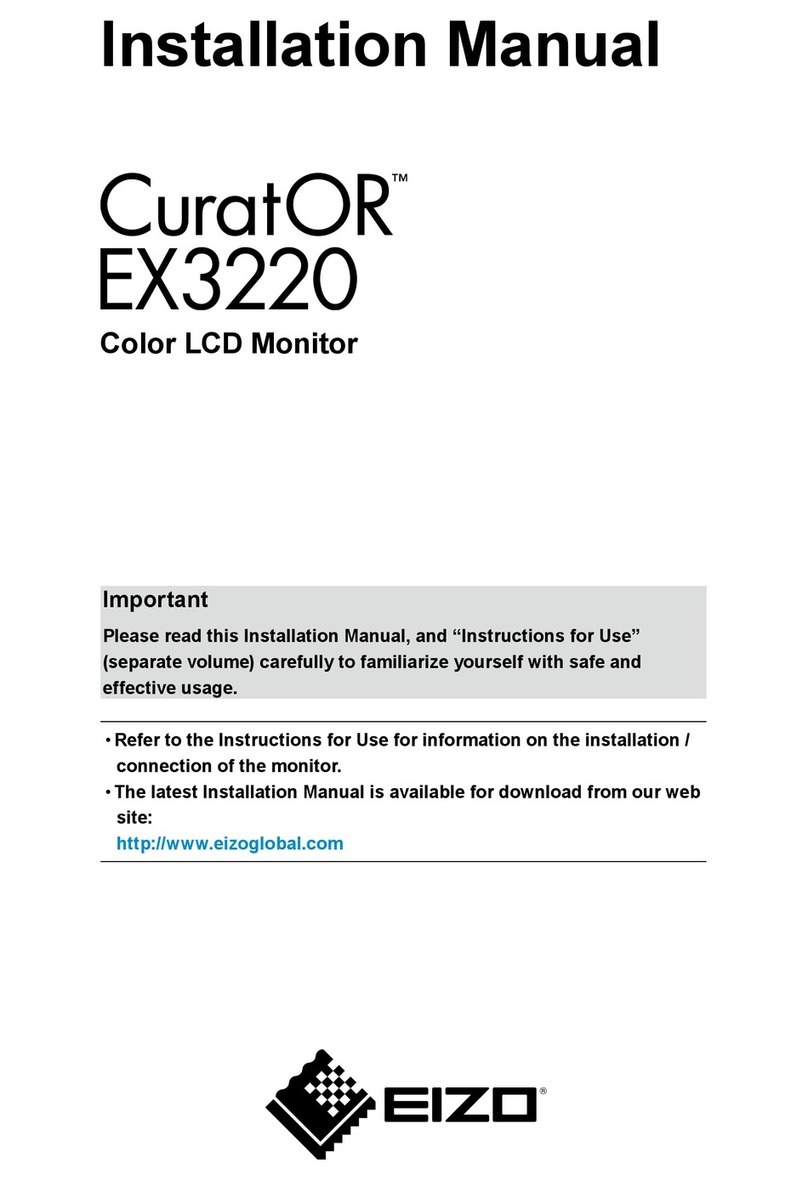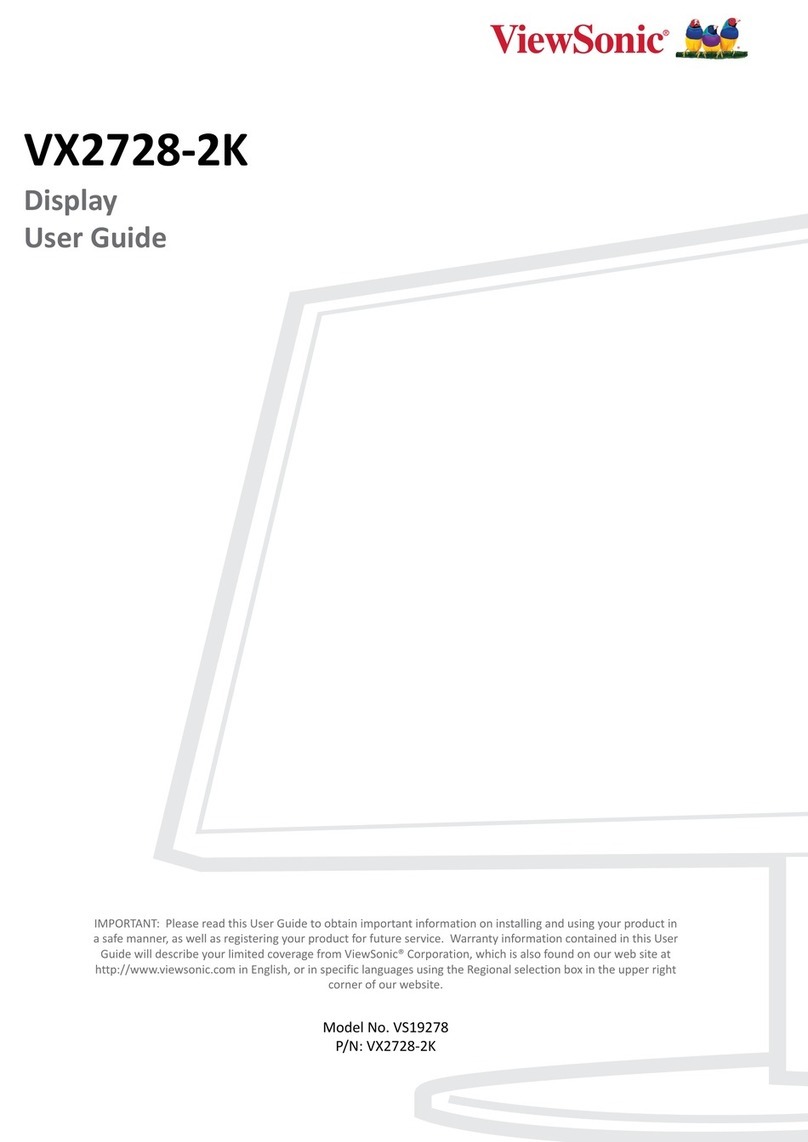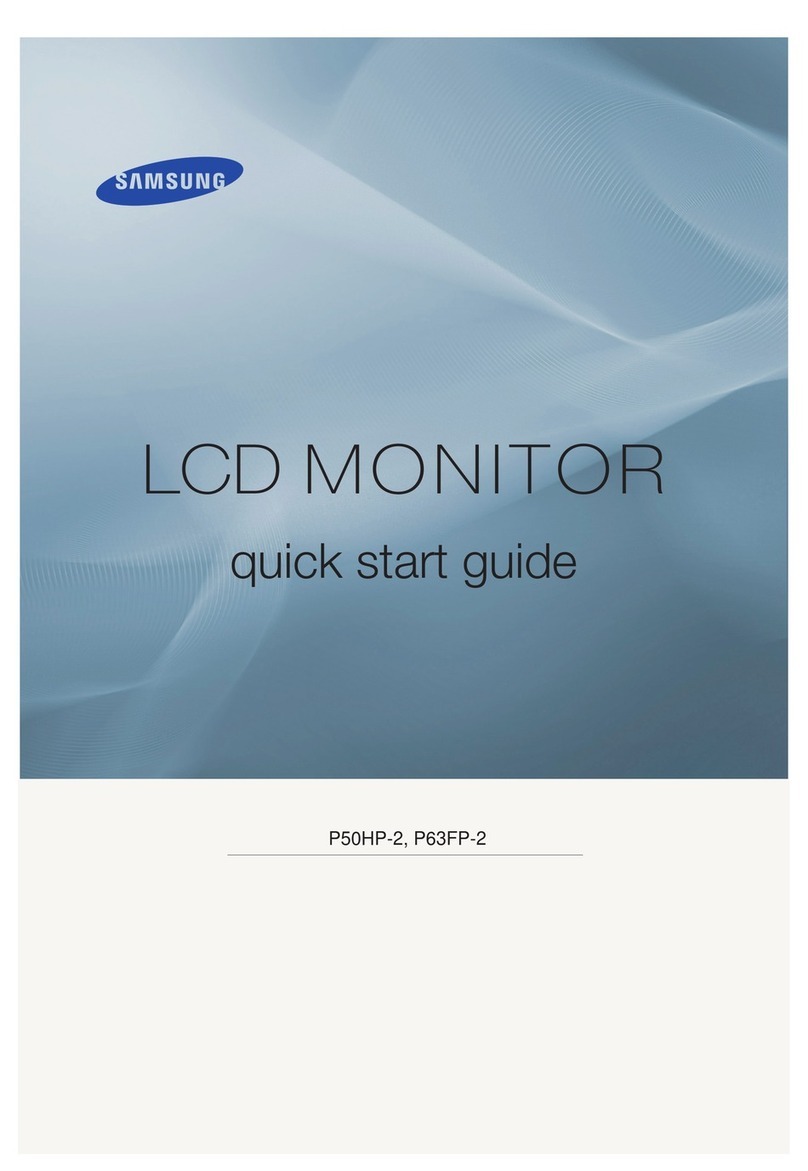Littelfuse SE-330 User manual

Tel: +1-800-832-3873
E-mail: relays@littelfuse.com
www.littelfuse.com/SE-330
Document Number: PM-1200-EN
MANUAL FOR
SE-330 NEUTRAL-GROUNDING-RESISTOR MONITOR
SE-330HV NEUTRAL-GROUNDING-RESISTOR MONITOR
SE-330AU NEUTRAL-EARTHING-RESISTOR MONITOR
REVISION 11-B-121520
Copyright 2020 Littelfuse
All rights reserved.

SE-330 Series Neutral-Grounding-Resistor Monitor
Rev.11-B-121520
i
Table of Contents
1. General ......................................................................1
1.1 Modern Resistance-Grounded Systems..............1
1.2 SE-330 Series NGR Monitoring...........................1
1.3 NGR Sensitive Open and Short Detection ..........3
2. Operation ..................................................................3
2.1 Settings ................................................................3
2.1.1 GF Trip Time.....................................................3
2.1.2 GF Trip Level ....................................................3
2.1.3 VN Trip Level ....................................................3
2.1.4 Pulse Period Adjustment (SE-330 only) ...........8
2.1.5 Configuration Settings ......................................8
2.1.5.1 Relay K1 Function (S1, SE-330 ONLY).........8
2.1.5.2 Trip-Relay Mode and Trip-Memory Mode (S2,
SE-330 AND SE-330HV ONLY) .................................8
2.1.5.3 Ground-Fault-Trip Latch (S3).........................9
2.1.5.4 Resistor-Fault-Trip Latch (S4) .......................9
2.1.5.5 Sensing-Resistor Selection (S5)....................9
2.1.5.6 Frequency (S6) ..............................................9
2.1.5.7 Upgrade Mode (S8) .......................................9
2.1.6 Resistor-Fault Trip Time ...................................9
2.1.7 Resistor-Fault Trip Level...................................9
2.1.8 Geo-Magnetic Filter ..........................................9
2.2 Calibration............................................................9
2.3 Pulsing Operation (SE-330 only) .......................10
2.4 Trip Indication and Reset...................................10
2.5 Remote Operation .............................................11
2.6 Relay K1 LED ....................................................11
2.7 Unit Healthy Output ...........................................11
2.8 Diagnostic LED ..................................................11
2.9 Enhanced Health Status .....................................11
2.10 Analog Output ..................................................11
3. Installation ..............................................................12
3.1 SE-330 Series....................................................12
3.2 Sensing Resistor................................................20
3.3 Ground-Fault CT ................................................32
3.4 Isolated Ground Connection ..............................39
3.5 Pulsing Connection (SE-330 only).....................39
4. Data Interfaces .......................................................40
4.1 SD Card .............................................................40
4.1.1 Datalogging.....................................................40
4.1.2 Firmware Upgrade ..........................................40
4.2 USB Interface.....................................................40
4.3 Network Communications..................................41
5. Troubleshooting.....................................................42
6. Technical Specifications .......................................44
6.1 SE-330 Series (unless otherwise stated) ..........44
6.2 SENSING RESISTORS.....................................49
6.3 Current Sensors ................................................ 50
7. Ordering Information............................................. 52
8. Warranty ................................................................. 55
9. Test procedures ..................................................... 55
9.1 Resistor-Fault Tests.......................................... 55
9.1.1 Calibration, Open and Short Tests ................ 55
9.1.2 Voltage Test (SE-330 and SE-330AU only) .. 56
9.1.3 Voltage Test (SE-330HV only)....................... 57
9.2 Sensing-Resistor Test....................................... 57
9.3 Analog-Output Test........................................... 57
9.4 Ground-Fault Performance Test ....................... 57
Appendix A SE-MON330 Reference .......................... 59
A1. General ............................................................. 59
A2. Setup ................................................................. 59
A2.1 Initial Configuration Tab .................................. 60
A2.2 Summary Tab.................................................. 60
A2.3 Detailed Status Tab ........................................ 64
A2.4 Configuration tab............................................. 64
A2.4.1 Resistor fault ................................................ 64
A2.4.2 Ground Fault ................................................ 64
A2.4.3 Configuration................................................ 65
A2.4.4 Networking ................................................... 65
A2.4.5 SNTP Client ................................................. 65
A2.5 Event Records Tab ......................................... 66
A2.6 System Menu .................................................. 68
A2.6.1 Earth-Fault CT.............................................. 68
A2.6.2 Voltage Setting............................................. 68
A2.6.3 Set Date/Time .............................................. 68
A2.6.4 Reset to Defaults ......................................... 68
A2.6.5 Remote Calibration ...................................... 68
A2.7 Using Set-Point Assistant ............................... 70
Appendix B - SE-330, SE-330HV, SE-330AU Revision
History.......................................................................... 71
Manual Revision History ............................................ 74

SE-330 Series Neutral-Grounding-Resistor Monitor
Rev.11-B-121520
ii
List of Figures
FIGURE 1. SE-330 Configuration Switches.............. 8
FIGURE 2. SE-330HV Configuration Switches......... 8
FIGURE 3. SE-330AU Configuration Switches......... 8
FIGURE 4. Analog-Output Connections. ................ 11
FIGURE 5. SE-330 Connection Diagram................ 13
FIGURE 6. SE-330HV Connection Diagram........... 14
FIGURE 7. SE-330AU Connection Diagram........... 15
FIGURE 8. SE-330 Outline and Panel-Mounting
Details............................................................... 16
FIGURE 9. SE-330 Outline and Surface-Mounting
Details............................................................... 17
FIGURE 10. SE-IP65CVR-G Weatherproof Cover
Outline .............................................................. 18
FIGURE 11. SE-IP65CVR-G Weatherproof Cover
Installation ........................................................ 19
FIGURE 12. ER-600VC Sensing Resistor. ............. 21
FIGURE 13. SE-MRE-600 Moisture-Resistant
Enclosure Outline............................................. 22
FIGURE 14. ER-600VC Installed in SE-MRE-600.. 23
FIGURE 15. ER-5KV Sensing Resistor. ................. 24
FIGURE 16. ER-5WP Sensing Resistor ................. 25
FIGURE 17. ER-15KV Sensing Resistor. ............... 26
FIGURE 18. ER-25KV Sensing Resistor. ............... 27
FIGURE 19. ER-35KV Sensing Resistor. ............... 28
FIGURE 20. ER-72KV Sensing Resistor Outline.... 29
FIGURE 21. ER-72KV Sensing Resistor Mounting
Details............................................................... 30
FIGURE 22. ER-1000HV Sensing Resistor. ........... 31
FIGURE 23. ER-1000HV Simplified Connection
Diagram............................................................ 32
FIGURE 24. ELCT5-88 and ELCT30-88 Ground-
Fault Current Sensors ...................................... 33
FIGURE 25. ELCT5-31 and ELCT30-31 Ground-
Fault Current Sensors...................................... 34
FIGURE 26. EFCT-1 Ground-Fault Current Sensor.
.......................................................................... 35
FIGURE 27. SE-CS30-70 Ground-Fault Current
Sensor .............................................................. 36
FIGURE 28. EFCT-26 and SE-CS30-26 Ground-
Fault Current Sensors ...................................... 37
FIGURE 29. RK-332 Remote Indication and Reset.38
FIGURE 30. PGA-0520 Analog Percent Current
Meter. ............................................................... 38
FIGURE 31. Simplified Isolated-Ground Connection.
.......................................................................... 39
FIGURE 32. Simplified Pulsing Connection............ 39
FIGURE 33. Ground-Fault-Test Circuits. ................ 58
FIGURE 34. Communication Tab............................ 61
FIGURE 35. Initial Configuration Tab...................... 61
FIGURE 36. Summary Tab ..................................... 62
FIGURE 37. Detailed Status Tab. ........................... 62
FIGURE 38. Configuration Tab ............................... 63
FIGURE 39. Event Records Tab............................. 67
FIGURE 40. System Parameters Menu .................. 69
FIGURE 41. Set-Point Assistant. ............................ 70
List of Tables
Table 1. Typical Values for Tripping Systems (SE-330
and SE-330HV) .................................................. 5
Table 2. Typical Values for Tripping Systems (SE-
330AU) ............................................................... 6
Table 3. Ground-Fault Trip Levels for Selected CTs
(SE-330 and SE-330HV).................................... 7
TABLE 4. Ground-Fault-Test Record...................... 59
DISCLAIMER
Specifications are subject to change without notice.
Littelfuse is not liable for contingent or consequential
damages, or for expenses sustained as a result of
incorrect application, incorrect adjustment, or a
malfunction.

SE-330 Series Neutral-Grounding-Resistor Monitor
Rev.11-B-121520
1
1. General
This is a combined manual for the following products:
•SE-330 Neutral-Grounding-Resistor Monitor
•SE-330HV Neutral-Grounding-Resistor Monitor
•SE-330AU Neutral-Earthing-Resistor Monitor
The features described in this manual are common to all
monitors unless otherwise indicated. Resistance-
grounded systems require a neutral-grounding resistor
(NGR), also known as a neutral-earthing resistor (NER)
in some regions. Both terms may be shown in this
manual.
The SE-330 and SE-330HV (firmware version 3.01 and
higher) are compliant with the 2018 CE Code.
The SE-330AU (firmware version 3.10 and higher) is
compliant with AS/NZS 2081.6:2011 and AS/NZS
2081.8:2011.
PC software SE-MON330 version 4.1 or higher
is required to configure the SE-330 series. For
more details about SE-MON330, refer to
Appendix A. SE-MON330 can be found at
www.littelfuse.com/relayscontrols.
1.1 Modern Resistance-Grounded Systems
A high-resistance-grounded system uses a neutral-
grounding resistor (NGR) with a low let-through current
to limit ground-fault current. This is an improvement
from low-resistance and solidly-grounded systems,
which do not use NGRs and therefore have a ground-
fault flash hazard that can cause substantial point-of-
fault damage. High-resistance grounding eliminates
these problems. Modern ground-fault protection reliably
operates at low current levels. Furthermore, the
probability of an arc-flash incident is significantly
reduced in a high-resistance-grounded system.
NGR selection depends on system charging current and
whether the system is an alarm-only or a tripping
system. Alarm-only systems are usually restricted to
system voltages up to 5 kV with NGR let-through
currents of 5 A or less. Occasionally, alarm-only
systems up to 15 kV and up to 10 A are used; however,
they are not common because a ground fault on such a
system tends to escalate to a phase-to-phase fault
before the ground fault can be located and cleared.
Consult Canadian Electrical (CE) Code rule 10-302,
National Electrical Code (NEC)* 250.36, and NEC
250.186 for application details (applies to SE-330 and
SE-330HV).
System charging current is the capacitive current that
flows to ground when a bolted ground fault occurs. This
current can be calculated or measured. For small
systems, the magnitude of charging current can be
conservatively estimated as ½ A per 1,000 kVA on low-
voltage systems and 1 A per 1,000 kVA on medium-
voltage systems.
In an alarm-only system or in a tripping system without
selective coordination, choose an NGR with a let-
through current larger than the system charging current.
Set the pick-up current of ground-fault devices at or
below 50% of the NGR let-through current.
In a tripping system with selective coordination, use
ground-fault devices with a definite-time characteristic to
achieve time coordination. Use the same pick-up
current for all ground-fault devices, which must be larger
than the charging current of the largest feeder. Select
an NGR with a let-through current between five and 10
times the pick-up current of the ground-fault devices.
Do not use a grounding transformer with a low-voltage
resistor:
•The combined cost of a transformer and a low-
voltage resistor is more than the cost of a
resistor rated for line-to-neutral voltage.
•A transformer saturated by a ground fault
through a rectifier can make ground-fault
protection inoperative.
•Transformer inrush current up to 12 times rated
current can cause a ground-fault voltage larger
than expected.
•A parallel transformer winding makes it difficult
to monitor NGR continuity.
•A transformer can provide the inductance
necessary to cause ferroresonance if the NGR
opens.
Following these guidelines will reduce the flash hazard,
reduce point-of-fault damage, achieve reliable ground-
fault protection, and ensure a stable system not subject
to ferroresonance.
1.2 SE-330 Series NGR Monitoring
The SE-330 microprocessor-based neutral-grounding-
resistor monitor series detect NGR failures and ground
faults in resistance-grounded systems. The SE-330

SE-330 Series Neutral-Grounding-Resistor Monitor
Rev.11-B-121520
2
series measure NGR resistance, NGR current, and
transformer or generator neutral-to-ground voltage. The
components required to monitor an NGR are an SE-330
series monitor, a 20- or 100-kΩER-series sensing
resistor (100- or 200-kΩsensing resistor for the SE-
330HV), and a current transformer (CT).
Power-circuit elements (other than neutral-connected
NGRs) that purposefully connect the power system to
ground are often not compatible with SE-330 NGR
monitoring. These elements include single-phase
grounding transformers, grounded-wye-primary potential
transformers, and grounded-wye-primary power
transformers.
The SE-330 continuously measures NGR resistance in
an unfaulted system. It will trip on resistor fault if NGR
resistance varies from its calibrated value. When a
ground fault occurs, voltage is present on the neutral.
NGR current will flow if the NGR is healthy. The SE-330
will trip on ground fault if fault current exceeds the GF
TRIP LEVEL setting for an interval equal to the GF TRIP
TIME setting. However, if the NGR fails open during a
ground fault, it is possible for fault resistance to satisfy
the NGR resistance measurement. To detect this
double-fault condition, the SE-330 measures neutral
voltage. If neutral voltage exceeds the VNTRIP LEVEL
setting and if NGR current is less than 5% of the CT
rating, the SE-330 series will trip on resistor fault. If the
resistor-fault circuit is tripped and the neutral voltage
exceeds the VNTRIP LEVEL setting for an interval
greater than the GF TRIP TIME setting, the ground-fault
circuit will also trip.
Ground-fault current is sensed by a CT with a 1- or 5-A
secondary (SE-330 or SE-330HV only), or by one of the
following sensitive CTs:
•ELCT5-x or ELCT30-x for the SE-330 and SE-
330HV
•EFCT-x or SE-CS30-x for the SE-330AU
For the SE-330 and SE-330HV, the trip level of the
ground-fault circuit is adjustable from 2 to 100% of the
CT rating and trip time is adjustable from 0.1 to 10.0
seconds.
For the SE-330AU, the trip level of the earth-fault circuit
is adjustable from 0.125 to 5 A for the EFCT-x and 0.75
to 30 A for the SE-CS30-x. Trip time is adjustable from
0.1 to 0.5 seconds. Open-CT detection is provided with
a fixed 2-second time delay.
The SE-330 series has four output relays. With firmware
version 3.00 or higher, relays K1, K2, and K3 (K2 and K3
for the SE-330AU) can be assigned to one of the
following functions (using SE-MON 330):
•Ground Fault (GF);
•Resistor Fault (RF);
•Enhanced Health Status (HEALTH);
•GF + RF;
•GF + RF + HEALTH;
•RF (Short Only);
•RF (Open Only); or
•DISABLED.
For the SE-330 only, regardless of the K1 assignment,
K1 can also be assigned to a pulsing function. This can
control a contactor to assist in locating faults.
For the SE-330 and SE-330HV, relays K1, K2, and K3
can be set to operate in the fail-safe or non-fail-safe
mode for undervoltage or shunt-trip applications.
For the SE-330AU, relay K1 is the trip relay and
operates in the fail-safe mode for undervoltage
applications. Relays K2 and K3 can be set to operate in
the fail-safe or non-fail-safe mode for undervoltage or
shunt-trip applications.
Relay K4 is a solid-state relay that provides basic UNIT
HEALTH indication.
Additional features include LED trip indication, trip
memory, front-panel and remote reset, 4-20-mA analog
output, trip event recorder, USB local communications,
microSD* data logging, and optional network
communications.
The SE-330 series provides these additional features
over the legacy models:
•NGR sensitive short and open detection
capability
•Assignable relay functions (K1, K2, K3 for the
SE-330 and SE-330HV, and K2, K3 for the SE-
330AU)
•When the trip level is set to MEM, the ground-
fault trip setting is defined by an internal non-
volatile memory variable. Range is 2 to 100% in
1% increments of the CT-primary rating.
•Indication relays can be set to fail-safe or non-
fail-safe.

SE-330 Series Neutral-Grounding-Resistor Monitor
Rev.11-B-121520
3
•The number of trip records has been increased
to 100 and includes date and time stamping.
•A microSD card interface can be used for short-
term data logging and firmware updates. See
Section 4.1.
•For ease of connection to new devices, the RS-
232 interface has been replaced by a Mini B
USB port.
•Dual Ethernet ports are available with support
for fiber-optic and RJ45 interfaces.
•The IEC 61850 protocol has been added.
1.3 NGR Sensitive Open and Short Detection
(firmware version 3.10 and higher)
The SE-330 and SE-330HV can be configured to trip if
the NGR resistance decreases to a value less than 10 to
70% of the Nominal NGR Resistance value, or if the
NGR resistance increases to a value greater than 120 to
1000% of the Nominal NGR Resistance value.
The SE-330AU can be configured to trip if the NER
resistance decreases to a value less than 50 to 70% of
the Nominal NER Resistance value, or if the NER
resistance increases to a value greater than 130 to
200% of the Nominal NER Resistance value.
The Nominal NGR Resistance value, NGR Short Trip
Level, and several other values can be configured using
SE-MON330. For more details about how to change
these values, refer to Appendix A.
2. Operation
2.1 Settings
2.1.1 GF Trip Time
GF TRIP TIME (definite time) is adjustable from 0.1 to
10.0 seconds for the SE-330 and SE-330HV, and from
0.1 to 0.5 seconds for the SE-330AU. Time-coordinated
ground-fault protection requires this setting to be longer
than the trip times of downstream ground-fault devices.
A trip-time accumulator provides a ground-fault memory
function for detection of intermittent faults. The
accumulated time increases when a ground fault is
detected and decreases when a ground fault is not
detected. A trip will eventually occur when the time for
fault current above the trip level is greater than the time
for fault current below the trip level.
A non-accumulating mode can also be selected. In this
mode, a trip occurs if the fault current remains higher
than the ground-fault trip level for the duration of the
ground-fault trip time.
2.1.2 GF Trip Level
The SE-330 series uses a Discrete-Fourier Transform
(DFT) Algorithm to measure the fundamental component
of NGR current.
Choose an NGR let-through current and a ground-fault
trip level according to the guidelines in Section 1.1.
For the SE-330 and SE-330HV, set the ground-fault trip
level as a percentage (2 to 100) of the CT-primary rating.
For the SE-330AU, the earth-fault trip level is adjustable
from 0.125 to 5 A for the EFCT-X and 0.75 to 30 A for
the SE-CS30-x.
When the GF Trip Level is set to MEM, the ground-fault
setting stored in non-volatile memory is used. This
parameter must be set using a PC running the SE-
MON330 software connected to the USB interface. The
setting range is 2 to 100% of CT primary rating in 1%
increments. The default value is 15%.
For the SE-330 and SE-330HV, inputs are provided for
5-, 1-, and 0.05-A-secondary CTs.
Typical values for 5-, 15-, and 25-A tripping systems are
shown in Tables 1 and 2. Ground-fault trip levels for
selected CTs are shown in Table 3. For other systems,
refer to the NGR Monitor Set-Point Assistant at
http://www.littelfuse.com/relayscontrols. The Set-Point
Assistant is included with the SE-MON330 software.
2.1.3 VN Trip Level
The SE-330 series uses a DFT algorithm to measure the
fundamental component of neutral voltage (VN).
The SE-330 series will trip and indicate a resistor fault if
neutral voltage is greater than the VNTRIP LEVEL setting
for the duration of the resistor-fault trip time, and ground-
fault current is less than 5% of the CT rating. If the
resistor-fault circuit is tripped and the neutral voltage
exceeds the VNTRIP LEVEL setting for an interval greater
than the GF TRIP TIME setting, the ground-fault circuit will
also trip.
For the SE-330 and SE-330AU, the VNTRIP LEVEL range
is 20 to 2,000 V with switch S5 in the 20-kΩ(Vx1) position,
and the range is 100 to 10,000 V with switch S5 in the
100-kΩ(Vx5) position.

SE-330 Series Neutral-Grounding-Resistor Monitor
Rev.11-B-121520
4
For the SE-330HV, the VNTRIP LEVEL range is 100 to
10,000 V with switch S5 in the 100-kΩ(Vx1) position, and
the range is 200 to 20,000 V with switch S5 in the 200-kΩ
(Vx5) position.
Calculate the voltage across the NGR when NGR current
is equal to the pick-up current of the ground-fault circuit.
Set the VNTRIP LEVEL at the next largest value. See Fig.
1 and Section 2.1.5.5.
Typical values for 5-, 15-, and 25-A tripping systems are
shown in Tables 1 and 2. For an NGR resistance greater
than 2 kΩ, use a 100-kΩsensing resistor. For other
systems, refer to the NGR Monitor Set-Point Assistant at
www.littelfuse.com/relayscontrols.

SE-330 Series Neutral-Grounding-Resistor Monitor
Rev.11-B-121520
5
Table 1. Typical Values for Tripping Systems (SE-330 and SE-330HV)
SYSTEM
VOLTAGE
(LINE-LINE)
NEUTRAL-GROUNDING
RESISTOR SENSING RESISTOR
GROUND-
FAULT
TRIP LEVEL
VNTRIP
LEVEL
(VOLTS)
CURRENT
(AMPERES)
RESISTANCE
(OHMS) MODEL
RESISTANCE
(SWITCH S5
SETTING)
(AMPERES)
(VOLTS)
480
600
2,400
4,160
480
600
2,400
4,160
7,200
14,400
4,160
7,200
14,400
25,000
35,000
72,000
5
5
5
5
15
15
15
15
15
15
25
25
25
25
25
100
55
69
277
480
18
23
92
160
277
554
96
166
332
577
808
420
ER-600VC
ER-600VC
ER-5KV
ER-5KV
ER-600VC
ER-600VC
ER-5KV
ER-5KV
ER-15KV
ER-15KV
ER-5KV
ER-15KV
ER-15KV
ER-25KV
ER-35KV
ER-72KV
20 kΩ
20 kΩ
20 kΩ
20 kΩ
20 kΩ
20 kΩ
20 kΩ
20 kΩ
100 kΩ
100 kΩ
20 kΩ
100 kΩ
100 kΩ
100 kΩ
100 kΩ
200 kΩ
1.0
1.0
1.0
1.0
3.0
3.0
3.0
3.0
3.0
3.0
5.0
5.0
5.0
5.0
5.0
20.0
60
100
340
800
60
100
340
800
170x5=850
340x5=1,700
800
170x5=850
340x5=1,700
800x5=4,000
1,200x5=6,000
6,000 x 2
=12,000

SE-330 Series Neutral-Grounding-Resistor Monitor
Rev.11-B-121520
6
Table 2. Typical Values for Tripping Systems (SE-330AU)
SYSTEM VOLTAGE
(VOLTS) NEUTRAL-EARTHING RESISTOR
EARTH-FAULT TRIP LEVEL
(AMPERES) VNTRIP
LEVEL
(VOLTS)
SENSING
RESISTOR S5
LINE TO
LINE
LINE TO
NEUTRAL
CURRENT
(AMPERES)
RESISTANCE
(OHMS)
EFCT-X
(5-A RATING)
SE-CS30-X
(30-A
RATING)
110 (3) 55 5 11 0.5 (1) 20 ER-600VC 20 kΩ
110
64
5
13
0.5
(1)
20
ER-600VC
20 k
Ω
240 (3) 120 5 24 0.5 (1) 20 ER-600VC 20 kΩ
240 139 5 28 0.5 (1) 20 ER-600VC 20 kΩ
415
240
5
48
0.5
(1)
60
ER-600VC
20 k
Ω
433
250
5
50
0.5
(1)
60
ER-600VC
20 kΩ
690 398 5 80 0.5 (1) 60 ER-600VC 20 kΩ
1,000 575 5 115 0.5 (1) 60 ER-5KV 20 kΩ
1,050
605
5
121
0.5
(1)
100
ER-5KV
20 k
Ω
1,100 635 5 127 0.5 (1) 100 ER-5KV 20 kΩ
3,300 1,905 5 381 0.5 (1) 200 ER-5KV 20 kΩ
6,600
3,810
5
762
0.5
(1)
500
ER-15KV
100 k
Ω
6,600 3,810 10 381 1.0 0.75 500 ER-15KV 100 kΩ
6,600 3,810 25 152 2.0 1.5 500 ER-15KV 100 kΩ
11,000
6,350
5
1,270
0.5
(1)
650
ER-15KV
100 k
Ω
11,000
6,350
10
635
1.0
0.75
650
ER-15KV
100 kΩ
11,000 6,350 20 318 2.0 1.5 650 ER-15KV 100 kΩ
11,000 6,350 25 254 2.0 2.4 650 ER-15KV 100 kΩ
22,000
12,700
5
2,540
0.5
(1)
1,700
ER-25KV
100 k
Ω
22,000
12,700
10
1,270
1.0
0.75
1,700
ER-25KV
100 kΩ
22,000 12,700 20 635 2.0 1.5 1,700 ER-25KV 100 kΩ
22,000
12,700
25
508
2.0
2.4
1,700
ER-25KV
100 k
Ω
22,000
12,700
50
254
(2)
24
8,500
ER-25KV
100 kΩ
33,000 19,050 50 380 (2) 24 10,000 ER-35KV 100 kΩ
(1) Minimum setting is 0.75 A. Use EFCT-x for AS/NZS 2081:2011 compliance.
(2) Maximum setting is 5 A.
(3) Single phase, centre tap.

SE-330 Series Neutral-Grounding-Resistor Monitor
Rev.11-B-121520
7
Table 3. Ground-Fault Trip Levels for Selected CTs (SE-330 and SE-330HV)
GF TRIP
LEVEL(1)
(%)
EFCT-x
5:0.05
(AMPERES)
SE-CS30-x
30:0.05
(AMPERES)
50:1
50:5
(AMPERES)
100:1
100:5
(AMPERES)
200:1
200:5
(AMPERES)
400:1
400:5
(AMPERES)
2
4
6
8
10
20
40
60
80
100
0.10
0.20
0.30
0.40
0.50
1.00
2.00
3.00
4.00
5.00
0.60
1.20
1.80
2.40
3.00
6.00
12.0
18.0
24.0
30.0
*
*
*
*
5
10
20
30
40
50
*
*
*
8
10
20
40
60
80
100
*
*
12
16
20
40
80
120
160
200
*
16
24
36
40
80
160
240
320
400
(1) When set to MEM, range is 2 to 100% in 1% increments.
* Setting not recommended.

SE-330 Series Neutral-Grounding-Resistor Monitor
Rev.11-B-121520
8
2.1.4 Pulse Period Adjustment (SE-330 only)
Pulse period is the cycle time of relay K1 when the
SE-330 is configured for pulsing operation. Pulse period
is adjustable from 1.0 to 3.0 seconds with a fixed duty
cycle of 50 percent. For example, with the 1.0-s setting,
relay K1 will be energized for 0.5 seconds and de-
energized for 0.5 seconds when pulsing is enabled.
See Section 2.3 for detailed pulsing operation
information.
NOTE: For pulsing configuration, set switch S1 to K1 =
PULSING and install an external pulse-enable switch.
2.1.5 Configuration Settings
Eight configuration switches (S1 to S8) and a calibration
button are located behind the access cover on the front
panel. See Figures 1, 2, and 3.
FIGURE 1. SE-330 Configuration Switches.
FIGURE 2. SE-330HV Configuration Switches.
FIGURE 3. SE-330AU Configuration Switches.
2.1.5.1 Relay K1 Function (S1, SE-330 ONLY)
Set switch S1 to K1 = TRIP to assign the trip function to
relay K1 and to activate switch S2. Relay K1 will change
state when a resistor-fault or ground-fault trip occurs.
Other trip functions can be assigned to K1 (SE-330 and
SE-330HV only) using SE-MON330 software or via
network communications.
Set switch S1 to K1 = PULSING to configure relay K1 for
pulsing operation. See Section 2.3.
2.1.5.2 Trip-Relay Mode and Trip-Memory Mode
(S2, SE-330 AND SE-330HV ONLY)
Set switch S2 to select the operating mode of trip relay
K1. In the non-fail-safe mode, relay K1 energizes and its
contact closes when a trip occurs. The non-fail-safe

SE-330 Series Neutral-Grounding-Resistor Monitor
Rev.11-B-121520
9
mode can be used to trip shunt-trip circuit breakers. In
the non-fail-safe mode, SE-330 trips are reset when
supply voltage is cycled.
In the fail-safe mode, relay K1 energizes and its contact
closes if there are no trips. The contacts will open in the
event of a trip, a loss of supply voltage, or a processor
failure. In the fail-safe mode, SE-330 trips are not reset
when the supply voltage is cycled.
NOTE: Switch S2 does not affect the operating modes
of relays K2, K3, and K4.
NOTE: Switch S2 only affects relay K1 operating
mode when K1 is assigned the trip function (switch S1
set to K1 = TRIP). Trip memory is enabled when K1 is
set to the fail-safe mode, regardless of the switch S1
setting.
2.1.5.3 Ground-Fault-Trip Latch (S3)
Set switch S3 to select latching or non-latching ground-
fault-circuit operation. Non-latching operation overrides
ground-fault-trip memory. See Sections 2.1.5.2 and 2.4.
2.1.5.4 Resistor-Fault-Trip Latch (S4)
Set switch S4 to select latching or non-latching resistor-
fault-circuit operation. Non-latching operation overrides
resistor-fault-trip memory. See Sections 2.1.5.2 and 2.4
2.1.5.5 Sensing-Resistor Selection (S5)
Set switch S5 to the resistance of the sensing resistor.
For the ER-600VC, ER-5KV, and ER-5WP, select 20 kΩ.
For the ER-15KV, ER-25KV, and ER-35KV, select
100 kΩ. For the ER-72KV and ER-1000V, select 200 kΩ.
Switch S5 sets the resistor-fault trip value and the VN
TRIP LEVEL range. See Section 2.1.3.
2.1.5.6 Frequency (S6)
Set switch S6 to 50 or 60 Hz to tune the digital filter to the
line frequency of the monitored system.
2.1.5.7 Upgrade Mode (S8)
The microSD card is used for firmware upgrades. See
Section 4.1.2 for upgrade instructions.
NOTE: An upgrade causes the SE-330 series to restart
and this may cycle the output relays.
2.1.6 Resistor-Fault Trip Time
The resistor-fault trip time can be adjusted from 12
(default) to 60 seconds using the SE-MON330 software
or via network communications. The resistor-fault trip
time is fixed at 10 seconds for the SE-330AU.
2.1.7 Resistor-Fault Trip Level
The resistor-fault trip level can be adjusted using the SE-
MON330 software or via network communications. See
Section 6.1.
2.1.8 Geo-Magnetic Filter
A low-frequency ground current can be caused by the
Earth’s magnetic field and from charged clouds passing
overhead during a thunderstorm. In some rare
conditions, this can cause a false resistor-fault trip.
The geo-magnetic filter is always enabled for firmware
v3.10 and higher. This specialized filter will help prevent
nuisance tripping if a continuously changing open-
resistance and short-resistance pattern is detected.
If this resistance-detection pattern is detected for longer
than 12 seconds:
•SE-MON330 will indicate a Geo-Magnetic
Interference diagnostic status in the Detailed
Status tab
•If an SD card is inserted, the datalogging file will
indicate Geo-Magnetic Interference in the
Diagnostic column
2.2 Calibration
The SE-330 series measures the resistance change of
the NGR relative to the NGR-resistance value determined
at the time of calibration. When the resistance change is
greater than a threshold amount (500 Ω for 20-kΩ
systems, 2,500 Ω for 100-kΩ systems, 5,000 Ω for 200-
kΩ systems), a resistor-fault trip occurs. The SE-330
must be calibrated on new installations, or if the NGR or
the sensing resistor is changed.

SE-330 Series Neutral-Grounding-Resistor Monitor
Rev.11-B-121520
10
NOTE: If the SE-330 series is not calibrated and is
supplied from the load side of the breaker (non-fail-safe
mode), calibrate within the resistor-fault trip time after
power-up or it may trip and interrupt its supply. See
Section 2.1.6.
The CALIBRATION button is located behind the access
cover on the front panel, and it is recessed to prevent
inadvertent activation.
NOTE: Calibration must be performed with the SE-330
series connected to the sensing resistor and NGR of
the installed system.
To calibrate, press and hold the CALIBRATION button
until the green CALIBRATED LED turns off and then
turns on (if the LED is already off, press and hold until the
LED turns on). Calibration takes approximately two
seconds. If calibration is not successful, a resistor-fault
trip occurs, the RESISTOR FAULT TRIP LED will be on,
the CALIBRATED LED will be off, and the DIAGNOSTIC
LED will flash the calibration-error code. See Section
2.8.
The SE-330 series may be calibrated remotely using
the SE-MON330 software with the USB interface or the
communications options.
For firmware v3.10 or higher, the CALIBRATED LED will
briefly flash every ten seconds when the following is
configured:
•For the SE-330 and SE-330HV, the NGR Short
Mode must be set to Sensitive, and the monitor
must be successfully calibrated.
•For the SE-330AU, the NER Short Mode and
NER Open Mode must be set to Sensitive, and
the monitor must be successfully calibrated.
If the latching resistor fault (switch S4) is selected, the
calibration-error code flashes until RESET is pressed
even if the CALIBRATED LED is on.
The calibration value is stored in non-volatile memory.
2.3 Pulsing Operation (SE-330 only)
If switch S1 is set to K1 = PULSING, pulsing occurs when
terminal 16 is connected to terminal 17. Relay K1
operates at a 50% duty cycle. The duration of each cycle
is adjustable from 1.0 to 3.0 seconds. When terminals 16
and 17 are not connected, K1 is not energized and its
contact is open.
Relay K1 can be used to control a contactor that is rated
for use at the line-to-neutral voltage. The contactor
causes changes in neutral-to-ground resistance by
adding or shorting portions of the NGR. See Section 3.5.
Pulsing ground-fault current appears as zero-sequence
current upstream from the fault.
Pulsing ground-fault current is distinguishable from
charging current and noise, and it can be traced with a
clip-on ammeter or current probe. If pulsing current is
detected on a cable or conduit, the fault is downstream.
Systematic testing allows faults to be located without
isolating feeders or interrupting loads.
Stop pulsing when a fault is located.
2.4 Trip Indication and Reset
Red LEDs and indication relays indicate ground-fault and
resistor-fault trips. The indication relays K2 (default is
GF) and K3 (default is RF) operate in either fail-safe or
non-fail-safe mode. The default is non-fail-safe mode. In
this mode, the relays are energized when a fault occurs.
The relay mode setting is stored in non-volatile memory
and can be set using the SE-MON330 software or
network communications.
When a trip occurs with latching operation selected, the
SE-330 series remains tripped until reset with the front
panel button or the remote-reset input. See Sections
2.1.5.3 and 2.1.5.4. Terminals 15 and 16 are provided for
remote reset as shown in Figures 5, 6, and 7. The reset
circuit responds only to a momentary closure so that a
jammed or shorted button does not prevent a trip. The
front-panel RESET button is inoperative when terminal 15
is connected to terminal 16. If non-latching operation is
selected (SE-330 and SE-330HV only), trips and
corresponding indication will automatically reset when the
fault clears. In addition, the power-up trip memory will be
ignored even when configuration switch S2 (SE-330 and
SE-330HV only) is set to fail-safe. The maximum
automatic reset time is 2.8 s.
The red DIAGNOSTIC LED annunciates latched
calibration-error and remote trips. See Section 2.8.
When supply voltage is applied with switch S2 (SE-330
and SE-330HV only) set to FAIL-SAFE, the SE-330
returns to its state prior to loss of supply voltage unless
switch S3 or S4 is set to non-latching. SE-330 and SE-
330HV trips reset when the supply voltage is applied with

SE-330 Series Neutral-Grounding-Resistor Monitor
Rev.11-B-121520
11
switch S2 set to NON-FAIL-SAFE. When a local, remote,
or network reset is issued, both trip LEDs will flash if they
are off.
Resistor-fault-trip reset can take up to one second. A
resistor-fault trip-memory trip can take up to three
seconds after the monitor powers up.
2.5 Remote Operation
Relays K2 and K3 can be used for remote indication, and
terminals 15 and 16 are provided for remote reset. RK-
332 Remote Indication and Reset components are shown
in Fig. 29. Connect them as shown in Figures 5, 6, and
7. RK-332 components are not polarity sensitive.
Indication relays can be set to fail-safe or non-fail-safe
operation using the SE-MON330 software or network
communications. The default mode is non-fail-safe. In
non-fail-safe mode, relays energize on fault.
Network-enabled SE-330s can be remotely tripped and
reset by the network master. The red DIAGNOSTIC LED
indicates a network-initiated trip. See Section 2.8. Refer
to the appropriate SE-330 communications manual.
2.6 Relay K1 LED
The yellow RELAY K1 LED follows the state of relay K1
and is on when K1 is energized (contact closed).
2.7 Unit Healthy Output
The UNIT HEALTHY relay K4 provides a basic status of
processor health, which is energized when the processor
is operating. It can be ordered with N.O. or N.C.
contacts. See Section 7. An ENHANCED HEALTH
Status can be assigned to relays K1, K2, and K3. See
Section 2.9.
NOTE: The K4 output changes state momentarily
during a processor reset.
NOTE: K4-contact rating is 100 mA maximum.
2.8 Diagnostic LED
The DIAGNOSTIC LED is used to annunciate trips
without individual LED indication. The number of short
LED pulses between pauses indicates the cause of the
trip.
By default, only critical diagnostic flash codes are shown.
Non-critical diagnostic codes include SD Card status and
USB Error status. All other diagnostic codes are
considered critical.
Starting with SE-330 firmware version 2.60 and SE-
MON330 software version 3.8, the SE-330 can be
configured to show only critical diagnostic codes. In this
configuration, non-critical diagnostic codes will not be
indicated with the DIAGNOSTIC LED.
Diagnostic messages are always visible with the SE-
MON330.
See Sections 4.2 and 5.
2.9 Enhanced Health Status
The Enhanced Health Status can be assigned to relays
K1, K2, and K3 (firmware version 3.00 and higher). The
assigned relay(s) will trip when a critical diagnostic code
occurs. See Section 5 for a list of critical diagnostic
codes.
2.10 Analog Output
An isolated 4–20-mA output indicates NGR current with
full-scale output corresponding to the CT rating. An
internal 24-Vdc supply allows the analog output to be
connected as a self-powered output. Power from an
external supply is required for loop-powered operation.
See Fig. 4. A PGA-0520 analog meter can be panel-
mounted to display the NGR current. See Fig. 30 and
Section 7.
FIGURE 4. Analog-Output Connections.

SE-330 Series Neutral-Grounding-Resistor Monitor
Rev.11-B-121520
12
3. Installation
3.1 SE-330 Series
Outline and panel cut-out dimensions for the SE-330
series are shown in Fig. 8. To panel mount the SE-330,
insert it through the panel cut-out and secure it with the
four included 8-32 locknuts and flat washers.
If an optional SE-IP65CVR-G Hinged Cover is used,
follow the included installation instructions. See Figures
10 and 11.
All connections to the SE-330 series are made with plug-
in, wire-clamping terminal blocks. Each plug-in terminal
block can be secured to the SE-330 series by two captive
screws for reliable connections.
Outline dimensions and mounting details for surface
mounting the SE-330 are shown in Fig. 9. Fasten the
optional surface-mount adapter to the mounting surface
and make connections to the adapter terminal blocks.
Follow Fig. 9 instructions to mount or remove the
SE-330.
Ground terminal 7 (G) and connect terminal 6 (R) to the
sensing-resistor R terminal.
Use terminal 1 (L1) as the line terminal on ac systems, or
the positive terminal on dc systems. Use terminal 2
(L2/N) as the neutral terminal on ac systems or the
negative terminal on dc systems. Connect terminal 3 ( )
to ground.
NOTE: Disconnect terminal 1 (L1) and terminal 2
(L2/N) before performing dielectric strength testing of
the control panel.
NOTE: Connections to terminals 4 (SPG) and 5
(SPGA) are not required when using the SE-330
hardware revision 10 and higher. However, it is
recommended to connect terminal 4 to terminal 5 to
maintain backwards compatibility with the older SE-330
series (hardware revision 04A and lower).

SE-330 Series Neutral-Grounding-Resistor Monitor
Rev.11-B-121520
13
FIGURE 5. SE-330 Connection Diagram.

SE-330 Series Neutral-Grounding-Resistor Monitor
Rev.11-B-121520
14
FIGURE 6. SE-330HV Connection Diagram.

SE-330 Series Neutral-Grounding-Resistor Monitor
Rev.11-B-121520
15
FIGURE 7. SE-330AU Connection Diagram

SE-330 Series Neutral-Grounding-Resistor Monitor
Rev.11-B-121520
16
FIGURE 8. SE-330 Outline and Panel-Mounting Details.

SE-330 Series Neutral-Grounding-Resistor Monitor
Rev.11-B-121520
17
FIGURE 9. SE-330 Outline and Surface-Mounting Details.
Other manuals for SE-330
4
This manual suits for next models
2
Table of contents
Other Littelfuse Monitor manuals

